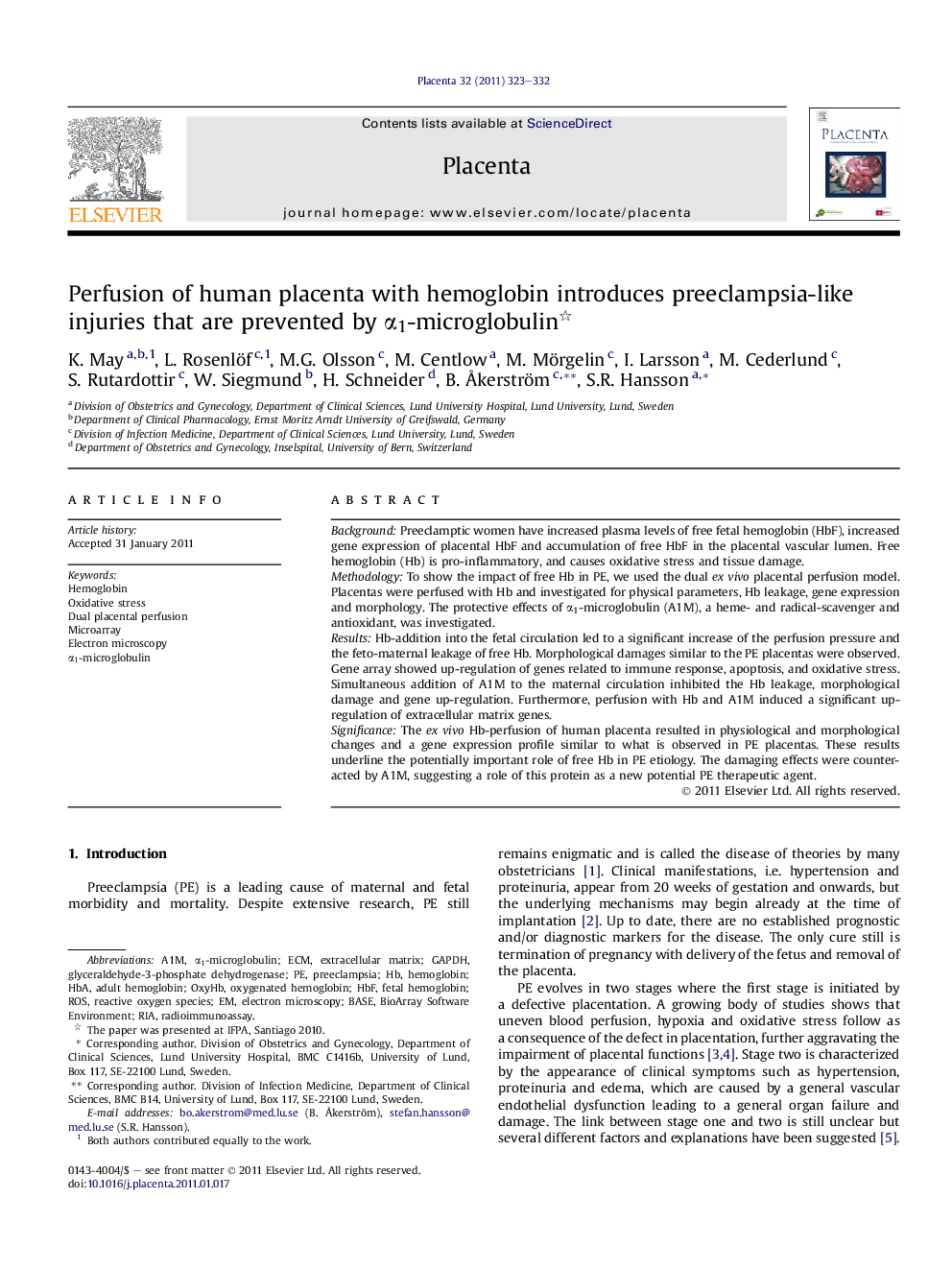| Article ID | Journal | Published Year | Pages | File Type |
|---|---|---|---|---|
| 2789135 | Placenta | 2011 | 10 Pages |
BackgroundPreeclamptic women have increased plasma levels of free fetal hemoglobin (HbF), increased gene expression of placental HbF and accumulation of free HbF in the placental vascular lumen. Free hemoglobin (Hb) is pro-inflammatory, and causes oxidative stress and tissue damage.MethodologyTo show the impact of free Hb in PE, we used the dual ex vivo placental perfusion model. Placentas were perfused with Hb and investigated for physical parameters, Hb leakage, gene expression and morphology. The protective effects of α1-microglobulin (A1M), a heme- and radical-scavenger and antioxidant, was investigated.ResultsHb-addition into the fetal circulation led to a significant increase of the perfusion pressure and the feto-maternal leakage of free Hb. Morphological damages similar to the PE placentas were observed. Gene array showed up-regulation of genes related to immune response, apoptosis, and oxidative stress. Simultaneous addition of A1M to the maternal circulation inhibited the Hb leakage, morphological damage and gene up-regulation. Furthermore, perfusion with Hb and A1M induced a significant up-regulation of extracellular matrix genes.SignificanceThe ex vivo Hb-perfusion of human placenta resulted in physiological and morphological changes and a gene expression profile similar to what is observed in PE placentas. These results underline the potentially important role of free Hb in PE etiology. The damaging effects were counteracted by A1M, suggesting a role of this protein as a new potential PE therapeutic agent.
